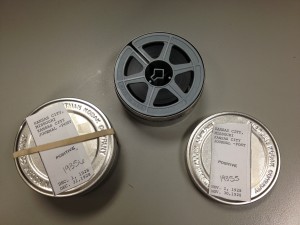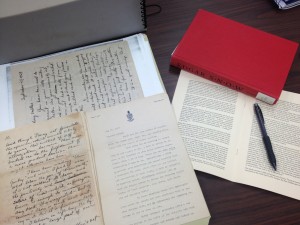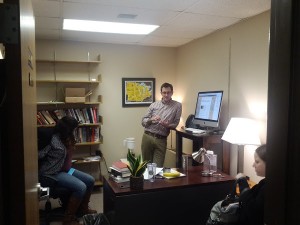By Autumn R. Neal
In my last post, I talked about going through the letters and photos of the Edgar Snow Papers at the State Historical Society. After choosing the items I wanted to use, I had to digitize them and before this assignment I only knew how to use a basic scanner. Even though I had a lot to learn and got confused a few times, the process of digitizing the documents was entertaining, as least for me. I learned about archival standards such as the required scan resolution, file names, and the information that needed to be attached to each file. We also learned how to use Photoshop which, by the way is amazing. I had never used it before and now I have a hard time using other photo editors.
 When I was scanning the newspaper articles I had chosen, I decided that the copy of the “Kansas City Boy Stowaway” article that I found wasn’t in very good shape and thought I would have to scrap it. The very helpful women at the Historical Society told me that it was on microfilm and I could request it to get a better copy. They ordered it for me from who knows where, emailed when it arrived, and helped me get the viewer set up. I looked through a month’s worth of newspapers from the 20s. In another class of mine, I am writing about advertisements from the 1970s and having that experience helps with the way I’m looking at my other paper. Even if you’re not doing research, looking at old microfilm would be a good way to entertain yourself while learning something at the same time.
When I was scanning the newspaper articles I had chosen, I decided that the copy of the “Kansas City Boy Stowaway” article that I found wasn’t in very good shape and thought I would have to scrap it. The very helpful women at the Historical Society told me that it was on microfilm and I could request it to get a better copy. They ordered it for me from who knows where, emailed when it arrived, and helped me get the viewer set up. I looked through a month’s worth of newspapers from the 20s. In another class of mine, I am writing about advertisements from the 1970s and having that experience helps with the way I’m looking at my other paper. Even if you’re not doing research, looking at old microfilm would be a good way to entertain yourself while learning something at the same time.

 and can read cursive. The letters in this photo are pretty clear but there were some that were difficult to read.
and can read cursive. The letters in this photo are pretty clear but there were some that were difficult to read.